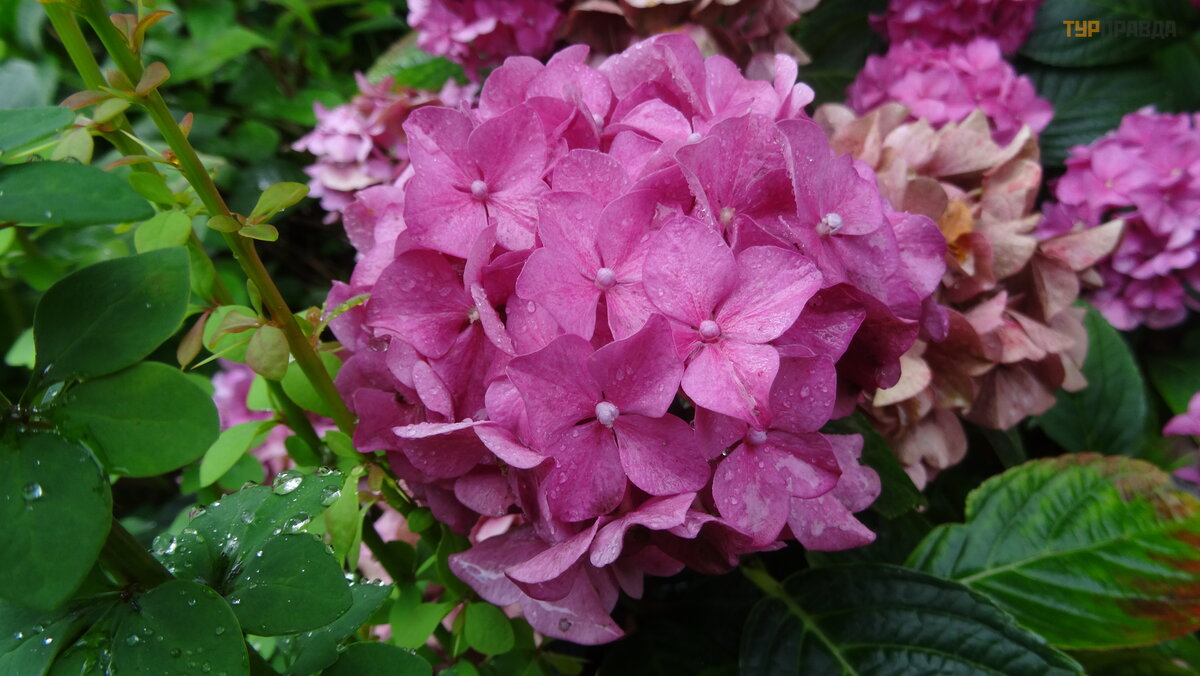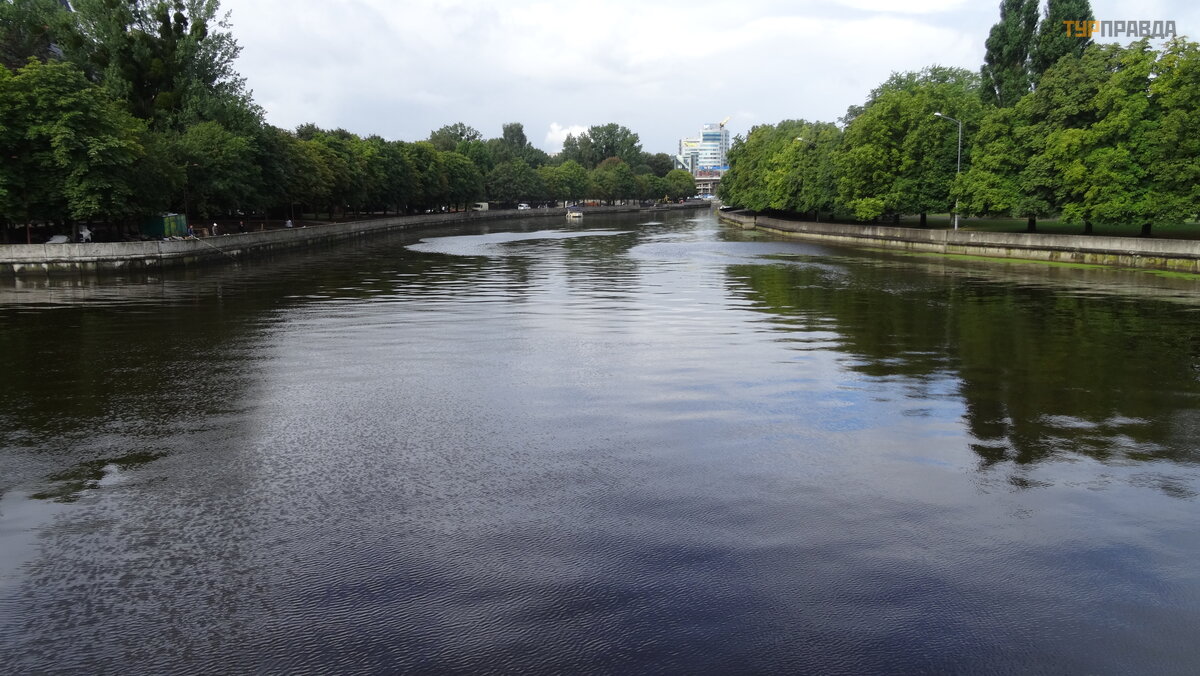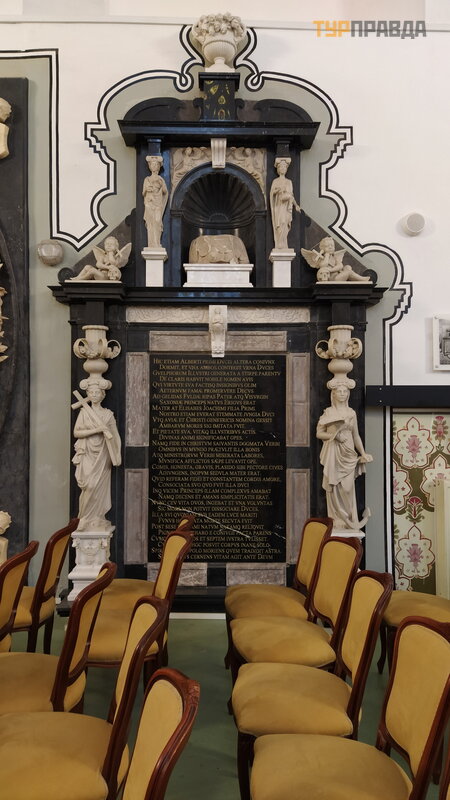In the Far Far Away Kingdom. Part three. Independent (in search of Koningsberg)
To be continued. Start here >>>
And one more free day, there were just a lot of plans for it, I still had to see Kaliningrad itself (otherwise, all the suburbs to the city center are only passing through), or rather, find Koningsberg. The morning is kind of gloomy and not very cheerful, but still on the road. The first is sq. Victory (formerly the square was called Hansa Platz), the main square of the city and the venue for the holidays. On the square there are administration buildings, shopping and entertainment centers, a special place on the square. Victory is occupied by the Cathedral of Christ the Savior - Orthodox Church and the Church of St. Peter and Fevronia. The temple is unique, it has two domes, as if it symbolizes the unity of married couples, weddings and baptisms take place in the temple.
 And this is how the square looks in the evening
And this is how the square looks in the evening
On the Triumphal Column Square, the fountains, in general, everything is pretty, but only the rain tried to confuse my plans, while I entered the temple, the rain still started. As it is, a free day and the weather is not for walking around the city, sadness, and suddenly, like in St. Petersburg, the weather is unpredictable, five minutes later the sun came out, washed clean city - go and see, "Far Far Away" decided to show itself in all its glory.
A small square and an avenue with new-old houses, Soviet five-story buildings for the World Cup by 2018 updated the facades of buildings, stylized as Koenigsberg houses, they look so nice, everyone is so different, you can’t confuse, someone didn’t like it, read it , as always a lot of controversy. I liked it, they feel good, even though the facades have been updated, and some of our houses have been closed with pictures and are happy (quite sad), and then the whole story will simply be broken.
And I'm moving into the very heart of the city, and I'm going through a lot of interesting things. The unfinished house of the Soviets (here it is completely uninteresting) is located on the site of the Royal Castle of Koenigsberg, the history of the city began from this castle. The castle no longer exists, but it still remains on printed and souvenir products. The royal castle was founded in 1255 and was wooden, and in 1262 stone walls were already erected, later they built, attached, rebuilt, expanded, decorated, and then the castle became an impregnable fortress. And when the castle lost its defensive capabilities, it became the cultural center of the Prussian lands, in 1525 the castle became the seat of the Prussian government, and later the castle was converted into a museum. During the war, the castle was badly damaged, destroyed over the years. On the site of the castle, they began to build the House of Soviets - and it is not destined for it to be completed, they are already going to dismantle it. Now only the open parts of the foundation remain from the castle, turned into a museum exposition (passed by).
The weather has cleared up completely and I’m already calmly heading towards Kant Island - previously the island was called Kneiphof (translated as “Surrounded by water, river”). Kant Island is indeed located surrounded by the Pregolya River, in the very heart of the city.
A nice public garden, Wooden Bridge with a beautiful lattice (historical) and Honey Bridge, otherwise you won't get to the island. On the Honey Bridge, there is a figure of Kholmin - fabulous creatures, such as gnomes or brownies, according to legend, they live next to people, and at night they make amber products, of course, they bring happiness and goodness to the house. The figurines of kholmins with such good-natured faces and “mouse ears” are quite small (reminiscent of Wroclov gnomes) and are located in different parts of the city near famous sights.
The Kholminy of Kaliningrad are members of the same family, from the older generation to the youngest. In total, seven sculptures are planned, so far only five, and I found only three (there is an idea: when all the homlins are made, make a tourist route between them).
Grandpa Kholmin Karl sits on the railing of the Honey Bridge (pedestrian) near Kant Island, I met Kholmin’s grandmother Marta at the Amber Museum, dad Kholmin perched on the railing of the trestle bridge (I didn’t see the children).
And here is the most important historical and cultural place of Kaliningrad - the Cathedral, or the Dome Cathedral of Our Lady and St. Adalbert (formerly the Kö nigsberg Cathedral). The first mention of the cathedral is 1333, and it is considered the date of foundation. “The master of the Teutonic Order allocated a site for construction” - this is how the story goes, the cathedral was built and rebuilt: it was both Catholic and Lutheran.
During the war, it was badly damaged, restoration began in the 1990s, and now the cathedral looks simply gorgeous, it is not used for its intended purpose now and is a cultural center. That's where I need to go, organ concerts are held there, and listening to the organ is a must, and fortunately for me, the concerts are held on time, right Hurray!! !
I take a ticket and while I go to explore near the adjacent territory:
Not far from Kant's grave there is a bronze monument to Duke Albrecht, the founder of the Kö nigsberg University "Albertina". The first university building was located near the cathedral on the island.
On the walls of the cathedral, along the perimeter, there are historical epitaphs with images and texts in German and Latin (there is a Russian translation). The grave of Immanuel Kant always gathers a lot of tourists around, Kant was buried in 1804, and this was the last burial in the cathedral.
In front of the main entrance to the cathedral there is a composition in miniature "Symbols of Kö nigsberg 1930".
Near the entrance to the concert hall there are two stone sculptures of bears, the sculptures were located on the stairs of the Kneiphof City Hall and survived during the war, the date of manufacture is considered to be 1697.
In the hall of the cathedral there is an organ complex consisting of two organs - a large and a small one. The mechanical organs of the cathedral, with the addition of electronics, were made by the German company "Alexander Schuke". A large organ was installed in the cathedral in 2008, and now it is the largest organ in Russia.
Before the concert began, I looked around the hall, in the hall of the cathedral there is a historical relic - the Baptismal cup-baptismal font. It is believed that the bowl appeared in Kö nigsberg, until 1350 it was in the Altstadt Church, stained glass windows with Masonic symbols.
After the concert, I also took an excursion to the space beyond the altar. In 2009, restoration work began on the largest epitaph that survived after the war. This is a 14-meter tombstone for the tomb of the first Duke of Prussia, Albrecht (1570). On the side walls there are epitaphs to the two wives of the duke (a remake, but made in such a way that it cannot be distinguished from the original).
The layout shows how densely built up the island is, and it was, again, the Internet helps.
Sculpture Park is a green park and an open-air museum, this is how the green walking area is called. I also took a walk, but rather at a fast pace. Of course, I wanted to take a walk, the island is very pretty, but the plans did not allow me to do this. For the last time, I admire the island, the cathedral, the park from the Trestle Bridge.
There was a wonderful view from the bridge, and the museum, which is located in the building of the Kö nigsber Stock Exchange built in 1870, which looked so great from the water, is also good now.
And then Yandex maps let me down a bit (but it turned out for the better, I didn’t have time to make friends with maps), they led me to another attraction - the building of the hospital of St. George. Hospital of St. George was founded by the Master of the Teutonic Order in 1329. The hospital (then a leper colony) was located in a suburb in one of the cities, which later became part of Kö nigsberg. In 1531, the leper colony was abolished and the hospital became a shelter-monastery for the elderly, and, as always, the fires of destruction did not pass by, but it was always restored. There was a school at the hospital where Immanuel Kant studied. The new building of the hospital of St. George was built in 1894 and lasted until 1945. Today it is the Kaliningrad Marine Fisheries College. Everything looks very impressive: turrets with spiers, facade, original entrance, in general, beautiful and a little mysterious. Wondering what it's like to study and live in such a historic place?
The goal was to find the concert hall of the Kaliningrad Philharmonic and attend another organ concert. And most importantly, the concert hall is located in the building of the Church of the Holy Family - a Catholic church, an architectural monument. The building was built in 1907, but when developing the project, all the rules and details of the buildings of the Teutonic Order, which were on the territory of Prussia, were taken into account. In the Church of the Holy Family, newborns were baptized, newlyweds were married, they prayed for the sick, but they never buried the dead. During the war years, the church was not badly damaged, and after restoration, a philharmonic society was opened in the building. According to reviews, the hall has good acoustics, an organ of the Rieger-Kloss company was installed in the altar place, and at one time the first festival of organ music was held at the Philharmonic. Concerts are not held every day, and I was not lucky (well, okay, I already listened to one), probably, two concerts in one day would have been too much, however, they offered a tour behind the organ and into the hall (sorry, there was not enough time).
And then I had to find a district of Kö nigsberg with the beautiful name Amalienau, and here Yandex did not disappoint, suggested everything correctly, and I saw another beautiful piece of the Far Far Away Kingdom.
Continued here >>>













































































































































